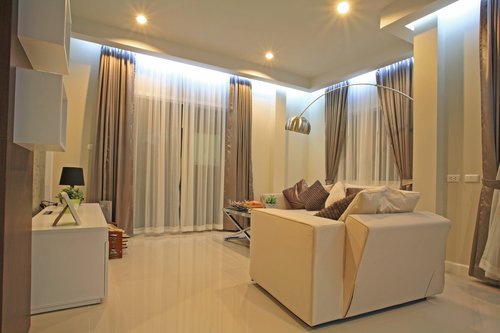There are two ways to lower your home electricity bill. If you live in an area open to customer choice, you can shop for a lower electricity rate. You can also lower your bill by finding ways to use less electricity while maintaining comfort and convenience. From time to time, we discuss new products and services that help us conserve energy by leveraging technology. From internet-connected appliances to learning thermostats, we are living in a time of unprecedented innovation. A recent entrant into the energy product market is responsive lighting.
Stack Lighting Products
Stack Lighting made a splash in the market with its responsive lighting technology. You might think of Stack as a smart lighting system. The basic configuration is a Stack “hub” and one or more Stack bulbs. The Stack bulbs include active sensors and signal processing technology that adapt to your needs. Essentially, Stack removes the need for light switches and dimmers. Stack, however, is not simply an old-fashioned motion detector.
Stack takes lighting control up a few notches by integrating with other technologies. For example, Stack ties in with the Nest learning thermostat to let Nest know when you enter rooms that tend to run hot or cold. Stack also enhances Nest’s occupancy sensor. From a safety perspective, Stack works with the Nest smoke and carbon monoxide detector so that your lights flash to signal danger.
Voice integration is also available with Stack though Amazon’s Alexa and Echo technologies. You can actually issue voice commands to dim lights in a particular room. Stack lights also automatically adjust brightness and color throughout the day to optimize lighting and energy use. While this sounds very slick and techy, the question remains as to the balance of cost and benefits.
Responsive Lighting Costs
There is no doubt that responsive lighting has its benefits. For a certain segment of the market obsessed with integration and living the life of the Jetsons, cost will not be the deciding factor. If you are a techie willing to pay a premium for gadgetry, you should not read any further.
First, consider an old 60-watt incandescent bulb. Lighting this bulb three hours per day at an electricity rate of 11 cents per kWh would cost you $7.23 per year in electricity. An equivalent LED bulb generating 840 lumens of light costs only $1.02 per year to operate. That is a tremendous reduction in your electricity expense. A 4-pack of these LED bulbs costs around $18 at leading home improvement stores.
A Stack Lighting starter kit with two 800-lumen bulbs and a control hub costs $89. Additional bulbs cost $28 each. Therefore, a standard LED bulb costs less than $5 while a responsive LED bulb costs $28. With LED operating costs already down to $1.02 per year, there simply is not enough room for meaningful cost savings to justify the additional expense.
Smart Thermostat a Better Investment
Smart or learning thermostats represent a major technological innovation for home energy conservation. In most parts of the country, heating and cooling our homes is a major expense. Optimizing home climate control can significantly lower our energy bills. Programmable thermostats were the first generation technology to address this opportunity. Unfortunately, our schedules proved too complex and the programming interfaces were tedious. As a result, most programmable thermostats operated in manual mode.
Learning thermostats such as the Nest and Lyric made an evolutionary leap by removing the need for manual programming. These smart thermostats are constantly adapting and responding to our changing lifestyles and needs.
Lighting is a different matter. Most of us have mastered the light switch and dimmer. Yes, we leave lights on in unoccupied rooms far too often. However, inexpensive light switches with integrated motion sensors and timers have been around for a long time. The real cost-saving evolution in home illumination is LED lighting.
Spend your money on a smart thermostat and converting to high-efficiency LED lights. Responsive lighting has a definite cool factor and some consumers will gladly pay a premium for the convenience. Cost savings with this technology, however, will be insignificant.


